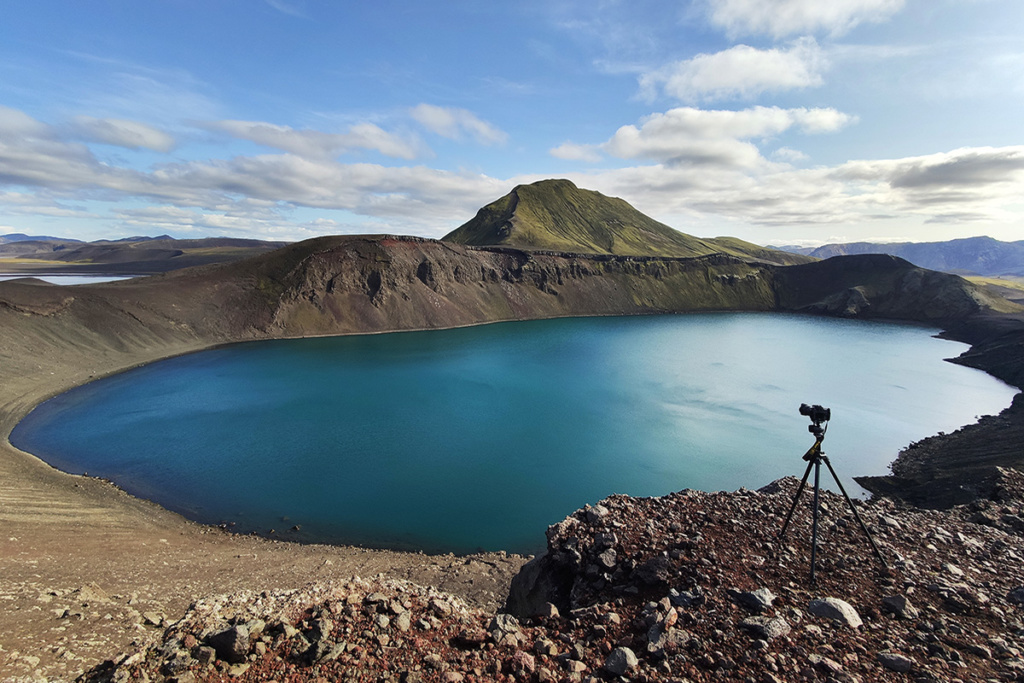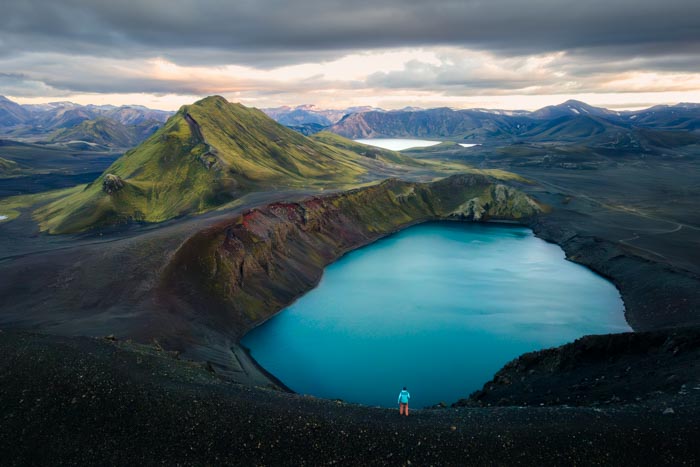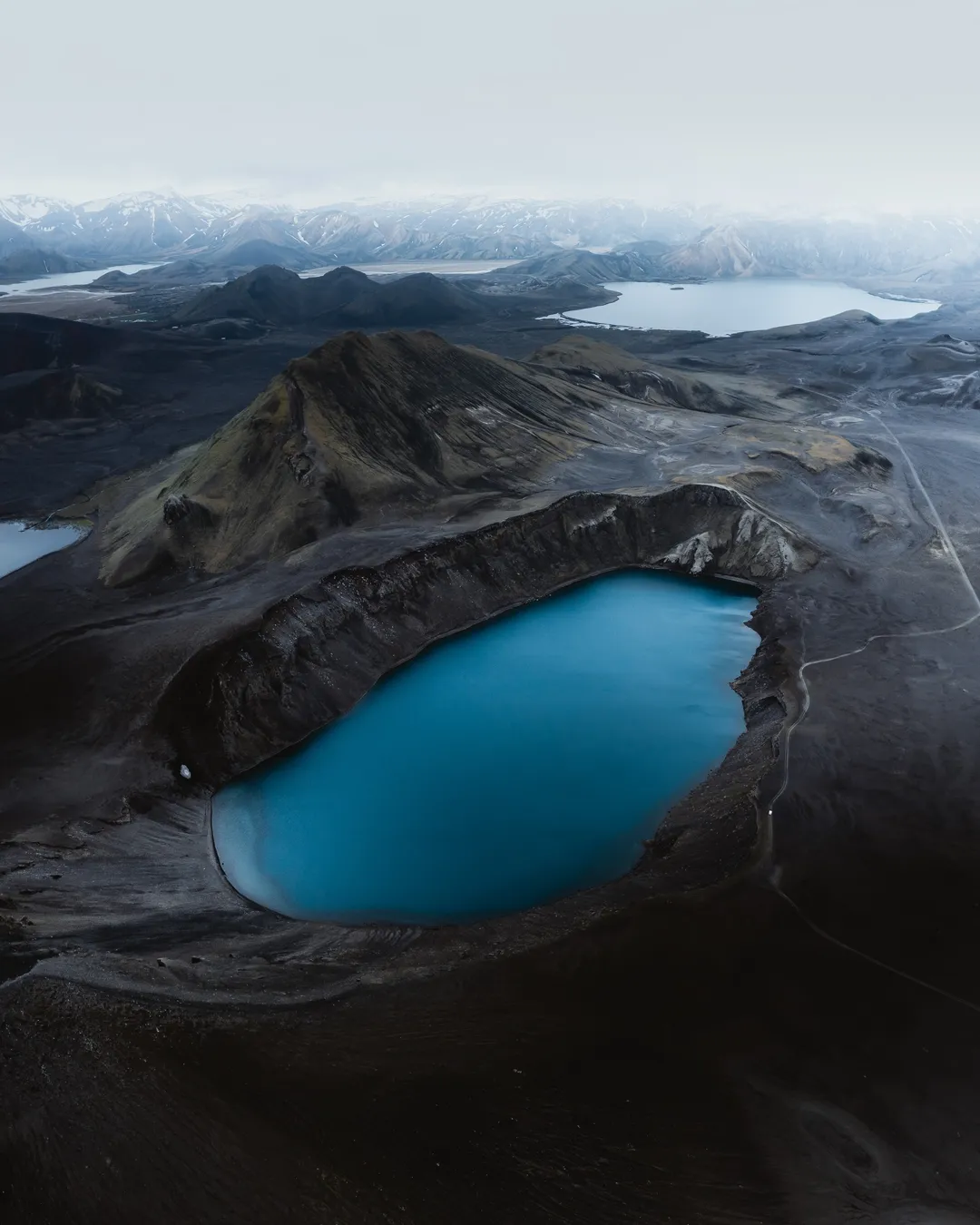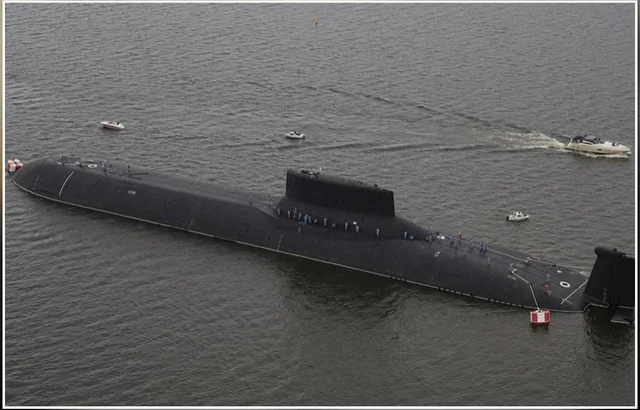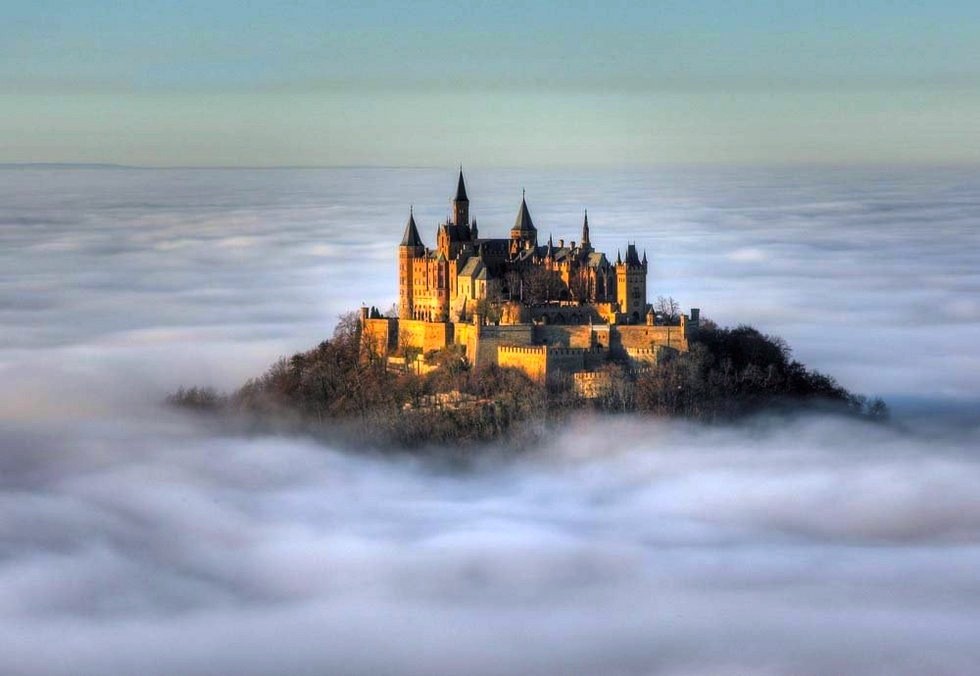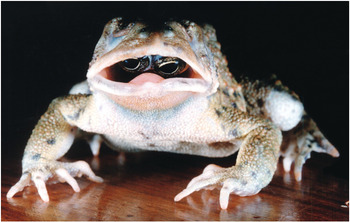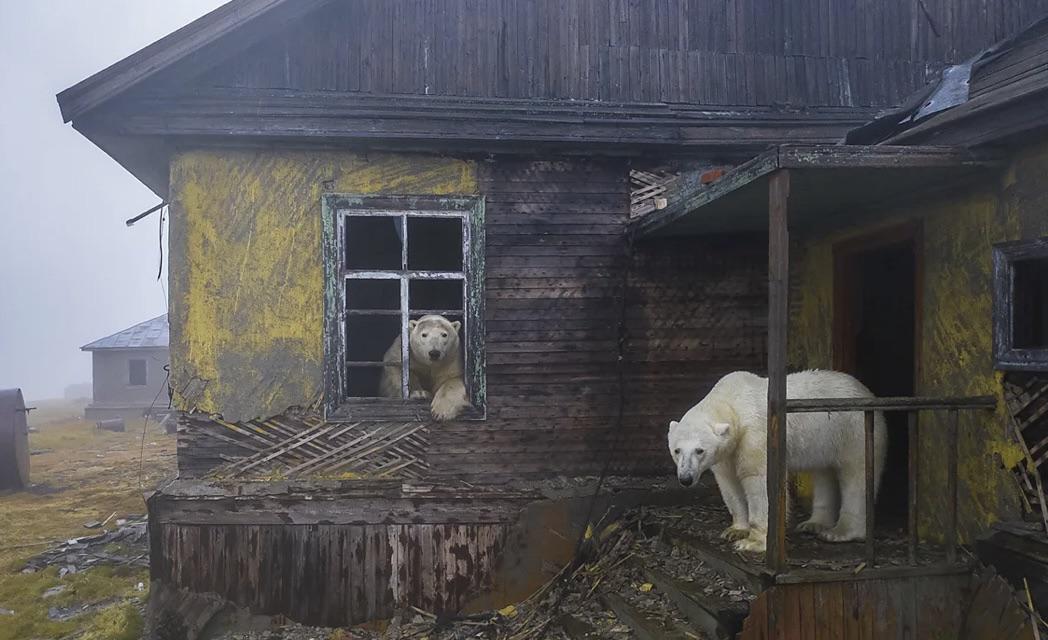Hidden among Iceland’s rugged highlands lies a geological masterpiece that captivates all who venture to its remote shores. Bláhylur, meaning “Blue Pool” in Icelandic, is a stunning crater lake whose otherworldly beauty epitomizes the raw, primeval landscape that has earned Iceland its reputation as the “Land of Fire and Ice.” This mesmerizing azure gem, cradled within the remnants of an ancient volcanic explosion, offers visitors a glimpse into both Iceland’s violent geological past and its serene natural splendor.
Bláhylur sits within a near-perfect circular crater in the Fjallabak Nature Reserve, approximately 70 kilometers east of the famous Hekla volcano. Also known as Hnausapollur, the lake stretches roughly 250 meters in diameter, with its almost mathematically precise circular shape creating a striking visual against the surrounding brownish-black volcanic landscape. The stark contrast between the lake’s vibrant blue waters and the barren, tawny slopes that encase it creates a scene that appears almost painted rather than naturally formed.
The crater itself was created through a powerful hydromagmatic eruption—a violent encounter between molten magma and groundwater. This explosive meeting, occurring roughly 1,200 years ago, blasted a perfect bowl into the landscape that eventually filled with some of the purest water in Iceland, creating the jewel-like lake we see today.
What makes Bláhylur particularly enchanting is its remarkable color. The lake displays a stunning spectrum of blue hues that shift with changing light conditions throughout the day. From deep sapphire to bright turquoise and sometimes even taking on milky cerulean tones, the water’s color transforms with the angle of the sun and the passing clouds.
This chromatic phenomenon results from the mineral composition of the water and the lake’s significant depth, estimated at over 30 meters in its deepest sections. The water’s clarity allows sunlight to penetrate deeply, with different wavelengths of light being absorbed at varying depths, creating the intense blue coloration that gives the lake its name. Small particles of volcanic minerals suspended in the water scatter blue light waves more effectively than other colors, intensifying this effect.
Part of Bláhylur’s enduring allure lies in its relative inaccessibility. Located in Iceland’s central highlands, the lake is only reachable during summer months when highland roads (known as F-roads) are open. Visitors must navigate challenging terrain in 4×4 vehicles, crossing unbridged rivers and traversing rocky landscapes to reach this hidden wonder. This journey, while demanding, serves as a fitting pilgrimage to one of Iceland’s most pristine natural sites.
The lake’s remote location has preserved its unspoiled character. Unlike some of Iceland’s more accessible natural attractions, Bláhylur rarely experiences overcrowding, allowing visitors to experience the profound silence and solitude that characterizes Iceland’s highland interior. Standing on the crater’s rim with only the sound of the wind for company creates a meditative experience that many describe as spiritual.
Bláhylur belongs to a volcanic area known as the Torfajökull volcanic system, one of Iceland’s most complex volcanic regions. This area features various volcanic formations, including rhyolite mountains displaying striking red, yellow, and white colorations that form a dramatic backdrop to the blue lake.
The region surrounding Bláhylur tells the story of Iceland’s ongoing geological creation. The nearby Landmannalaugar area, famous for its colorful rhyolite mountains and geothermal hot springs, shares this volcanic heritage. Together, these features demonstrate the dynamic forces still actively shaping this relatively young landmass that continues to grow and transform through volcanic activity.
Despite the harsh environment and extreme conditions, Bláhylur and its surroundings support specialized ecosystems. The lake itself contains minimal aquatic life due to its mineral composition and isolation, but the crater’s protected interior creates microclimates where resilient moss species and hardy arctic plants establish footholds in an otherwise barren landscape.
The broader Fjallabak Nature Reserve, established in 1979, protects this fragile highland environment and serves as a critical habitat for migratory birds during the brief summer season. Arctic foxes, Iceland’s only native land mammal, occasionally patrol the area’s perimeter in search of prey.
For Icelandic people, places like Bláhylur represent the untamed heart of their island nation. The lake appears in folklore and has inspired generations of Icelandic artists, poets, and photographers drawn to its perfect form and ethereal beauty.
Modern visitors experiencing Bláhylur often describe feeling transported to another world or even another planet—a sentiment that explains why Iceland’s highlands frequently serve as filming locations for science fiction productions seeking alien landscapes.
In a country renowned for its extraordinary natural wonders, Bláhylur stands as one of Iceland’s most perfect expressions of geological artistry—a flawless sapphire circle set within a rugged volcanic crown.
